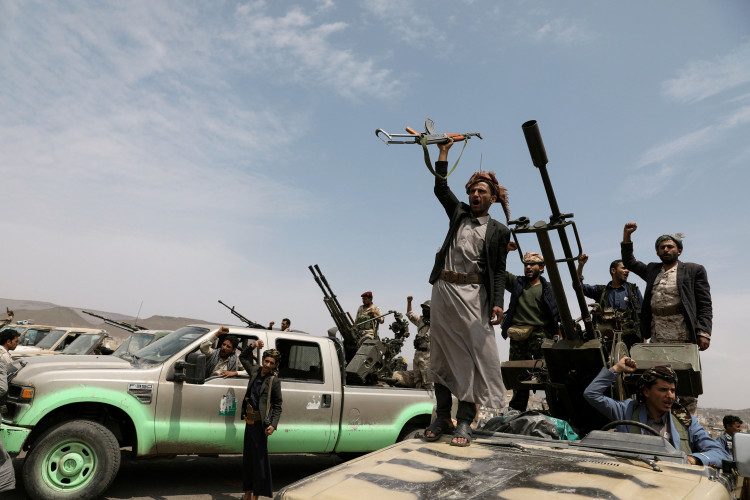A long-range Iranian-made drone struck the heart of Tel Aviv early Friday morning, killing one man and injuring four others. The attack, claimed by the Yemen-based Houthi militia, targeted a building near the beachfront, close to the U.S. Embassy premises. This incident, the latest in a series of escalations linked to the ongoing Gaza conflict, has sent shockwaves through Israel and beyond.
Chief spokesperson Rear Admiral Daniel Hagari confirmed that the drone, identified as an upgraded Iranian-made Samad-3 model, likely originated from Yemen. "Our estimation is that it arrived from Yemen to Tel Aviv," Hagari stated during a press briefing. This attack comes shortly after the Israeli military confirmed the killing of a senior Hezbollah commander in southern Lebanon, further heightening fears of a broader regional conflict.
The Houthis, aligned with Iran like Hezbollah, have stated that this attack was in solidarity with Palestinians in Gaza. Houthi spokesperson Yahya Saree declared, "Tel Aviv is a primary target within the range of our weapons." He added that the drone used, named "Yafa," was designed to evade interception systems and remain undetected by radars. "The operation has achieved its goals successfully," Saree announced in a televised speech.
The Israeli Defense Forces (IDF) have been investigating why the drone did not trigger air raid alarms. Initial reports suggest that while the aircraft was identified, the sirens failed to sound due to human error. An Israeli official explained, "We're talking about a large UAV (Unmanned Aerial Vehicle) that can fly large distances." In response, Israeli air patrols have been increased to bolster the country's airspace defenses.
This incident has prompted Israeli Defense Minister Yoav Gallant to meet with military commanders to review air defenses. "We must be prepared for defensive and offensive actions," Gallant emphasized, according to a statement from his office. The mayor of Tel Aviv has also announced a heightened state of alert for the city, Israel's economic center.
The drone strike's timing is notable, occurring just ahead of Prime Minister Benjamin Netanyahu's scheduled visit to Washington next week. This development is likely to amplify concerns over the potential for further fallout from the Gaza war, especially as the Houthis and other Iranian proxies continue to side with Hamas.
The attack's immediate aftermath saw sirens sounding repeatedly in areas close to the border with Lebanon, and Israeli air defenses intercepted at least one aerial target that crossed into Israeli airspace. Israel's emergency services reported that the body of a 50-year-old man was found in an apartment near the explosion site, with four others hospitalized for slight shrapnel injuries. All have since been released, according to health services.
The drone attack follows a series of Houthi strikes against Israel and Western targets, framed as acts of solidarity with Palestinians. The Houthis have intensified their assaults following Israel's invasion of Gaza, which was in retaliation to Hamas militants' attack on southern Israel on October 7, resulting in approximately 1,200 Israeli deaths and over 250 hostages being taken to Gaza. Since then, nearly 39,000 Palestinians have been killed in the ensuing conflict, according to health authorities in Gaza.
Reuters and CNN contributed to this report.






